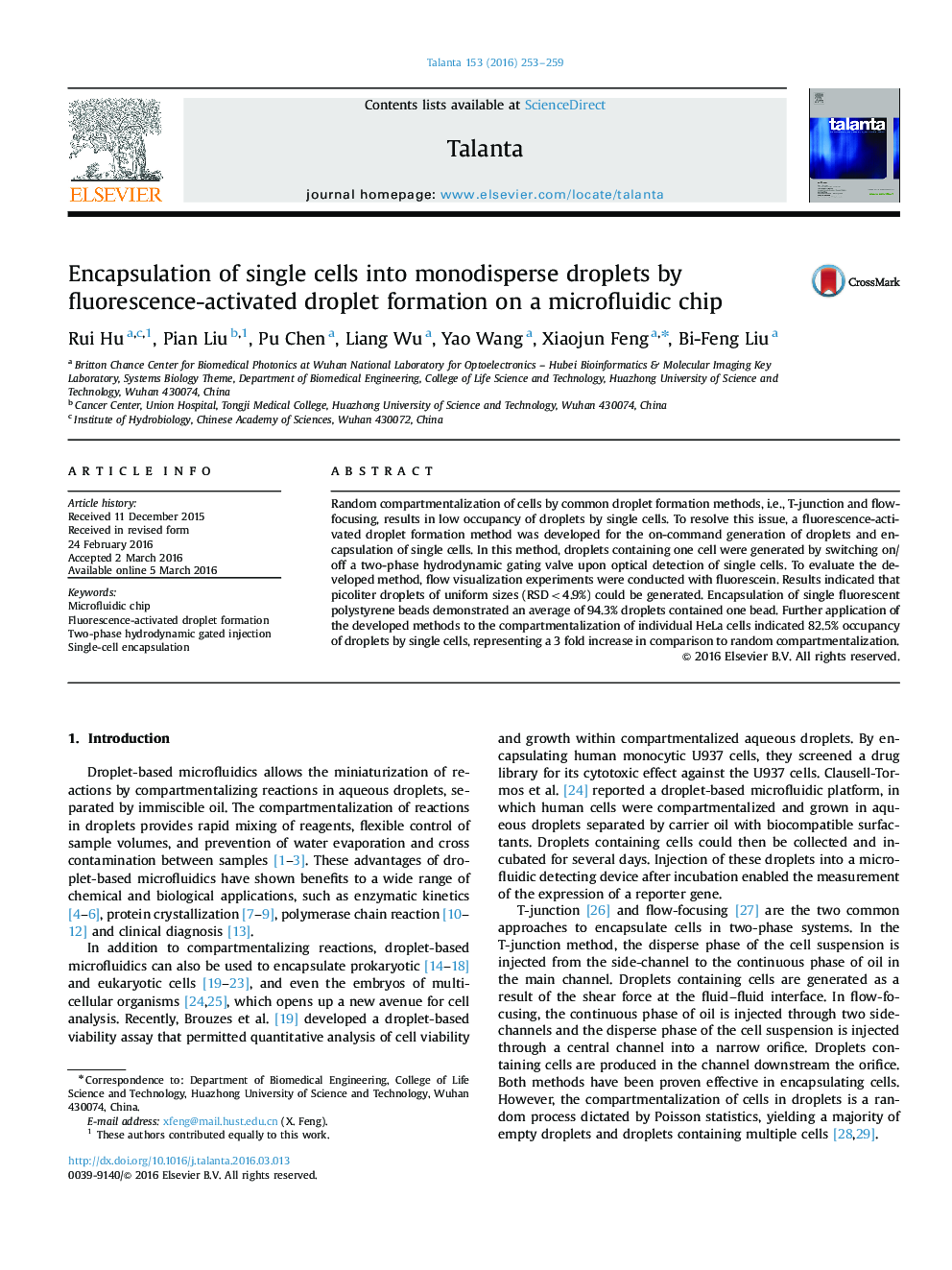| Article ID | Journal | Published Year | Pages | File Type |
|---|---|---|---|---|
| 1242583 | Talanta | 2016 | 7 Pages |
•Fluorescence-activated droplet formation was developed for encapsulating single cells.•Droplets containing one cell were generated by gated injection upon optical detection.•Application to encapsulate individual HeLa cells was demonstrated.
Random compartmentalization of cells by common droplet formation methods, i.e., T-junction and flow-focusing, results in low occupancy of droplets by single cells. To resolve this issue, a fluorescence-activated droplet formation method was developed for the on-command generation of droplets and encapsulation of single cells. In this method, droplets containing one cell were generated by switching on/off a two-phase hydrodynamic gating valve upon optical detection of single cells. To evaluate the developed method, flow visualization experiments were conducted with fluorescein. Results indicated that picoliter droplets of uniform sizes (RSD<4.9%) could be generated. Encapsulation of single fluorescent polystyrene beads demonstrated an average of 94.3% droplets contained one bead. Further application of the developed methods to the compartmentalization of individual HeLa cells indicated 82.5% occupancy of droplets by single cells, representing a 3 fold increase in comparison to random compartmentalization.
Graphical abstractFigure optionsDownload full-size imageDownload as PowerPoint slide
